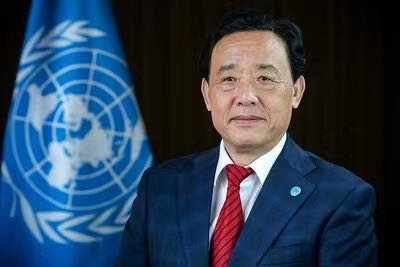
Exhibition time: 17-19 March, 2026 Shanghai, China
 中文
中文

Exhibition time: 17-19 March, 2026 Shanghai, China
 中文
中文

Qu Dongyu
Director-General of the Food and Agriculture Organization of the United Nations (FAO) 11 March 2022
Key words of the passage: food security; wheat; oil; fertilizer; trade
Over the past two years, COVID-19 has presented many challenges to global food security. Today, what is happening in Russia and Ukraine adds another significant challenge. Russia and Ukraine play a substantial role in the global food production and supply. Russia is the world's largest exporter of wheat, and Ukraine is the fifth largest. Together, they provide 19 percent of the world's barley supply, 14 percent of wheat, and 4 percent of maize, making up more than one-third of global cereal exports. They are also lead suppliers of rapeseed and account for 52 percent of the world's sunflower oil export market. The global fertilizer supply is also highly concentrated, with Russia as the lead producer.
Supply chain and logistical disruptions on Ukrainian and Russian grain and oilseed production and restrictions on Russia's exports will have significant food security repercussions. This is especially true for some fifty countries that depend on Russia and Ukraine for 30 percent or more of their wheat supply. Many of them are least developed countries or low-income, food-deficit countries in Northern Africa, Asia and the Near East. Many European and Central Asian countries rely on Russia for over 50 percent of their fertilizer supply, and shortages there could extend to next year.
Food prices, already on the rise since the second half of 2020, reached an all-time high in February 2022 due to high demand, input and transportation costs, and port disruptions. Global prices of wheat and barley, for example, rose 31percent over the course of 2021. Rapeseed oil and sunflower oil prices rose more than 60 percent. High demand and volatile natural gas prices have also driven up fertilizer costs. For instance, the price of urea, a key nitrogen fertilizer, has increased more than threefold in the past 12 months.
The conflict's intensity and duration remain uncertain. The likely disruptions to agricultural activities of these two major exporters of staple commodities could seriously escalate food insecurity globally, when international food and input prices are already high and volatile. The conflict could also constrain agricultural production and purchasing power in Ukraine, leading to increased food insecurity locally.
Policy recommendations
1. Keep global food and fertilizer trade open. Every effort should be made to protect the production and marketing activities needed to meet domestic and global demands. Supply chains should keep moving, which means protecting standing crops, livestock, food processing infrastructure, and all logistical systems.
2. Find new and more diverse food suppliers. Countries dependent on food imports from Russia and Ukraine should look for alternative suppliers to absorb the shock. They should also rely on existing food stocks and diversify their domestic production to ensure people's access to healthy diets.
3. Support vulnerable groups, including internally displaced people. Governments must expand social safety nets to protect vulnerable people. In Ukraine, international organizations must step in to help reach people in need. Across the globe, many more people would be pushed into poverty and hunger because of the conflict, and we must provide timely and well-targeted social protection programs to them.
4. Avoid ad hoc policy reactions. Before enacting any measures to secure food supply, governments must consider their potential effects on international markets. Reductions in import tariffs or the use of export restrictions could help to resolve individual country food security challenges in the short term, but they would drive up prices on global markets.
5. Strengthen market transparency and dialogue. More transparency and information on global market conditions can help governments and investors make informed decisions when agricultural commodity markets are volatile. Initiatives like the G-20's Agricultural Market Information System (AMIS) increases such transparency by providing objective and timely market assessments.
Source: CHINA DAILY
